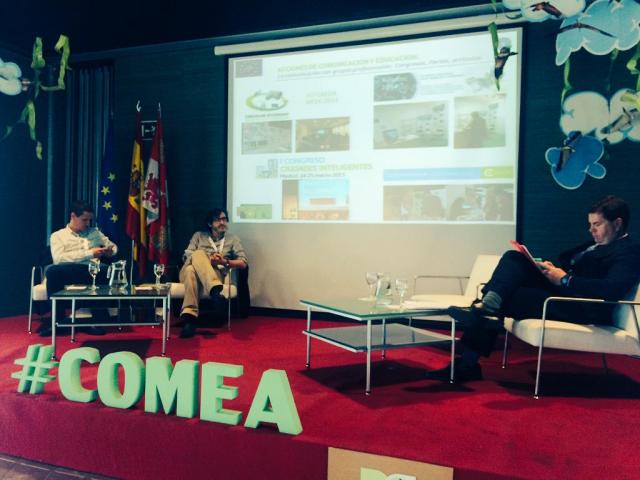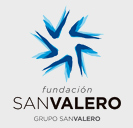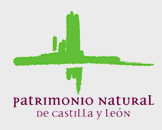LIFE GREEN TIC PROJECT PRESENTATION IN THE ENVIRONMENTAL COMMUNICATION AND EDUCATION CONGRESS (COMEA)

The Environmental Communication and Education Congress –that was trending topic #comea- was aimed at becoming a meeting point and a place for debate on the role of media in and for environmental education and to establish the baseline on which companies, organisations and other involved stakeholders can manage and disseminate their values and projects in favour of this issues.
A two-day congress, the session “how can LIFE projects help environmental education?” was the first one of the second day (14th April) and count on the participation as moderator of Miguel Puente, Head of Public Relations for the European Commission in Madrid. In the session, 3 organisations presented their experiences: Jesús Díez representing Fundación Patrimonio Natural de Castilla y León and the GreenTIC project; Arturo Larena, Agencia Efe Verde Manager presenting the Natura 2000 Activa project and Roberto Ruiz, President of the Environmental Sciences Association.
With the participation of around 100 people, media, journalism schools, environmental educators and other entities and organisations, the LIFE GreenTIC project presentation brought to line the existence of an emerging environmental problem: the carbon footprint of Information and Communication Technologies use, and the importance of facing the issue to raise awareness and inform public opinion from the media and to develop educational materials for environmental educators.
The presentation explained as well the different mechanisms, tools and activities that are being developed in the framework of the LIFE GreenTIC project to reach the different targets of the project: students and professionals of computing, electronics and telecommunications; public authorities and general public. And more specifically, social network use, the mihuellatic blog and the Twitter and Facebook profiles are elements with a growing importance and presence when reaching the potential targets of LIFE projects. Until recently those tools were hardly ever used in this kind of projects.
The role for dissemination of other more participative initiatives such as ideas contests, photo contests, commitment Charters for users and organisations developed in the LIFE GreenTIC project framework, was also highlighted.
A last noteworthy tool was the good practices catalogue developed by the project that will allow not only to raise awareness on the environmental problem, but also to give solutions that ICT users can apply. At the same time, the success initiatives catalogue will allow to have at public disposal, information on other projects and initiatives that have implemented or developed Green TIC criteria and can be a demonstrative example for other entities and persons wanting to develop their own projects.




